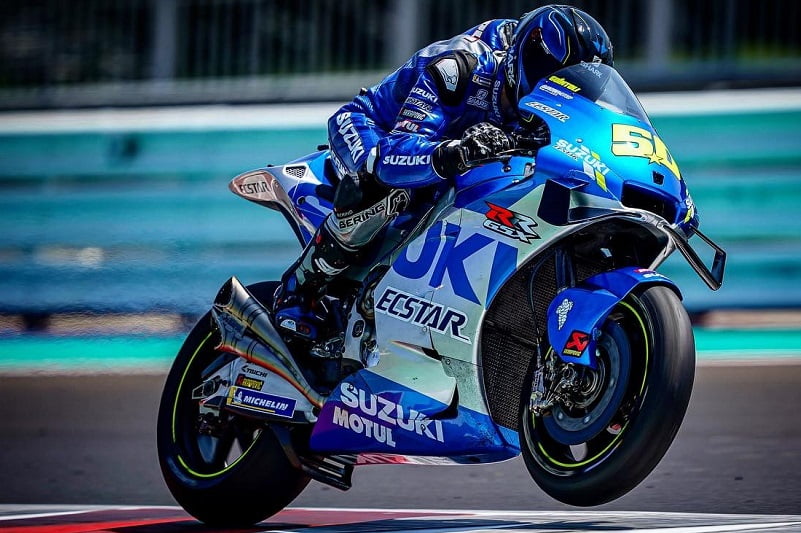Suzuki had a strong season in 2019. With an established star and a promising rookie, their GSX-RR has gone from strength to strength over the past few seasons. Combining speed and handling, this is how the Suzuki evolved to become a winning machine.
Throughout pre-season testing at Sepang and Qatar, both drivers were impressive. The team worked hard bringing a new chassis which both drivers seemed very happy with!
The Suzuki Ecstar team also tried a new engine for the first time at the end of last season. This new engine seems faster and more tractable than the previous version, according to drivers. In Sepang, both drivers had good pace in race simulations, then in Qatar they also had good pace both in long runs but also in sprints. Rins finished the test in fourth position, just 2 tenths off the top of the standings, and Mir was not far behind, in sixth place, just a quarter of a second behind first.
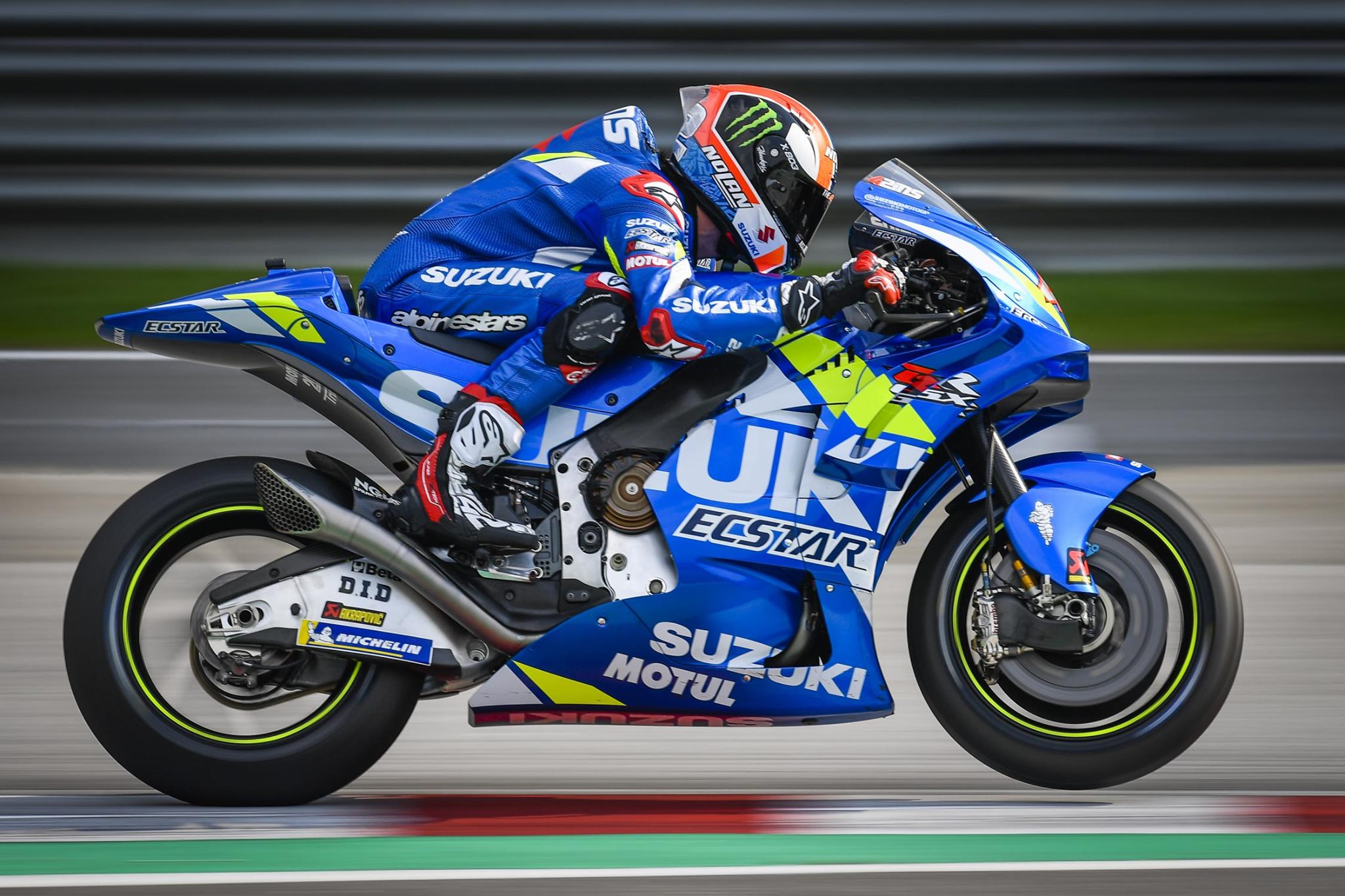
This is not the 2019 Suzuki GSX-RR, it is actually the 2018 version. It is important to have it in mind to note all the technical improvements made in 2019.
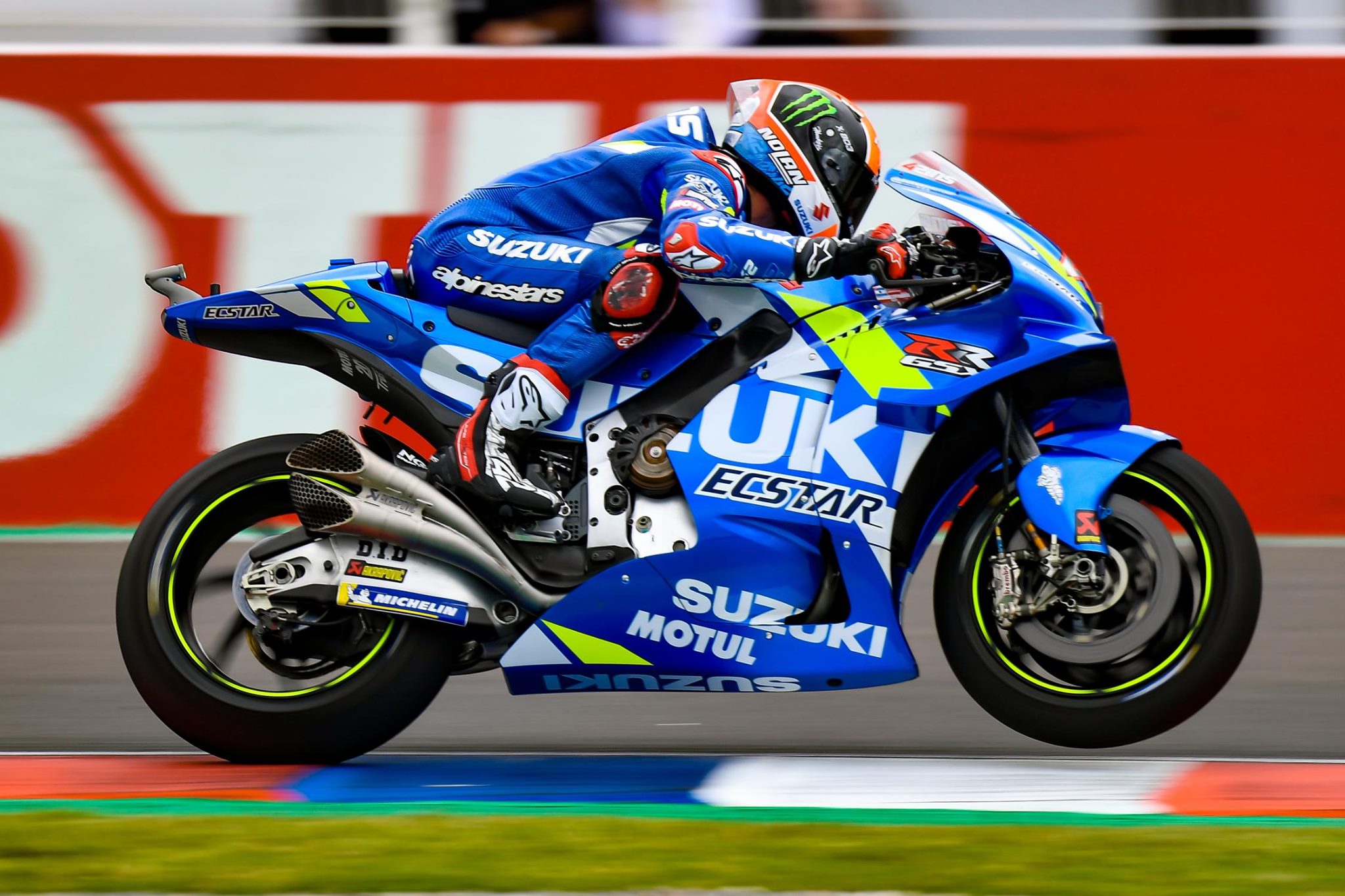
We see here that the exhaust now has 2 outlets.
The aerodynamic package has also changed, reducing to a single combined piece.
While some fairings have changed shape a bit, the bike itself keeps the same profile.
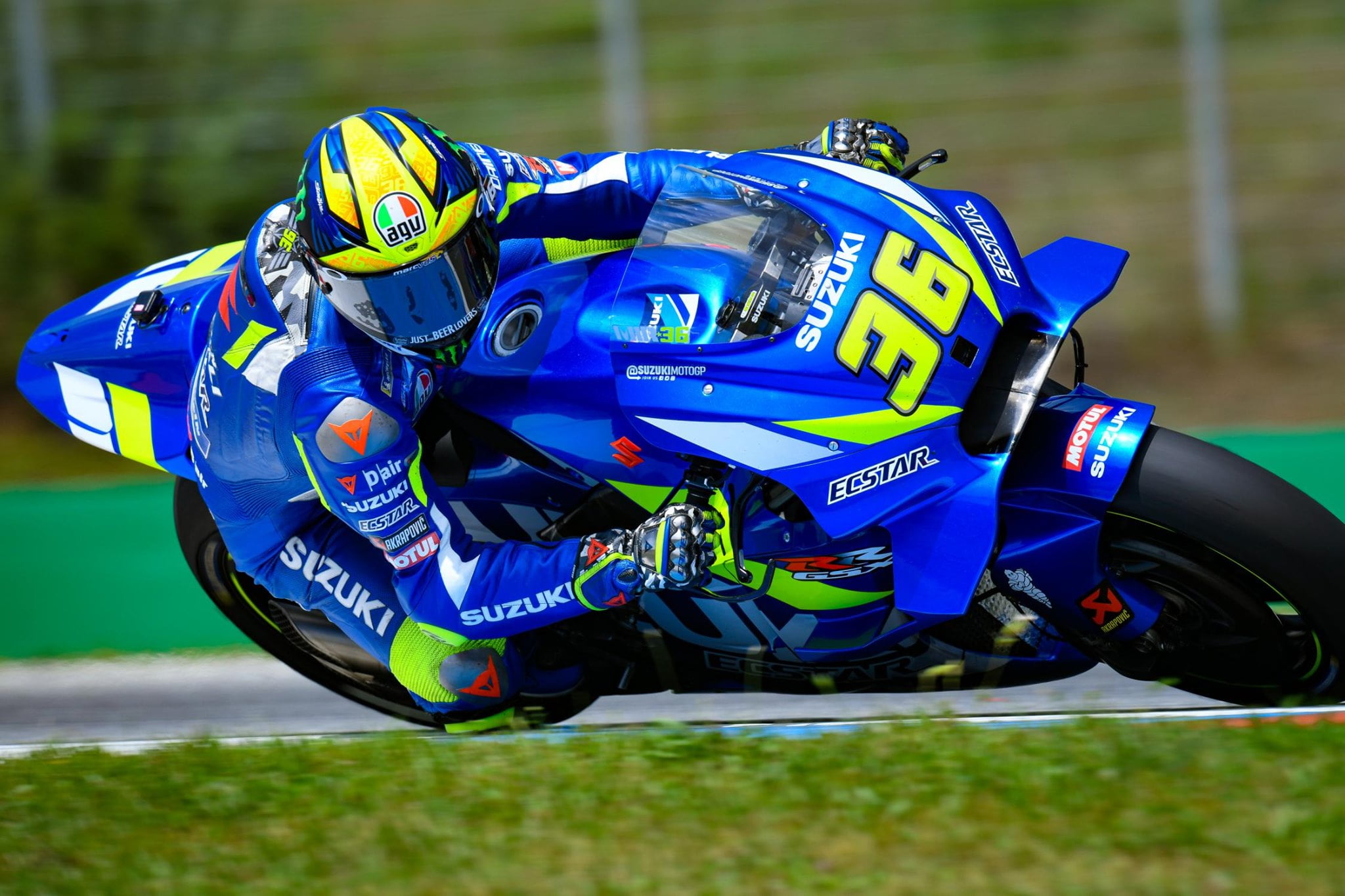
Let's focus on the front of Joan Mir's Suzuki, as well as the aerodynamic assembly and the air intake.
This is what Suzuki started with last year and what they used until the summer break. Their new aerodynamic package appears below.
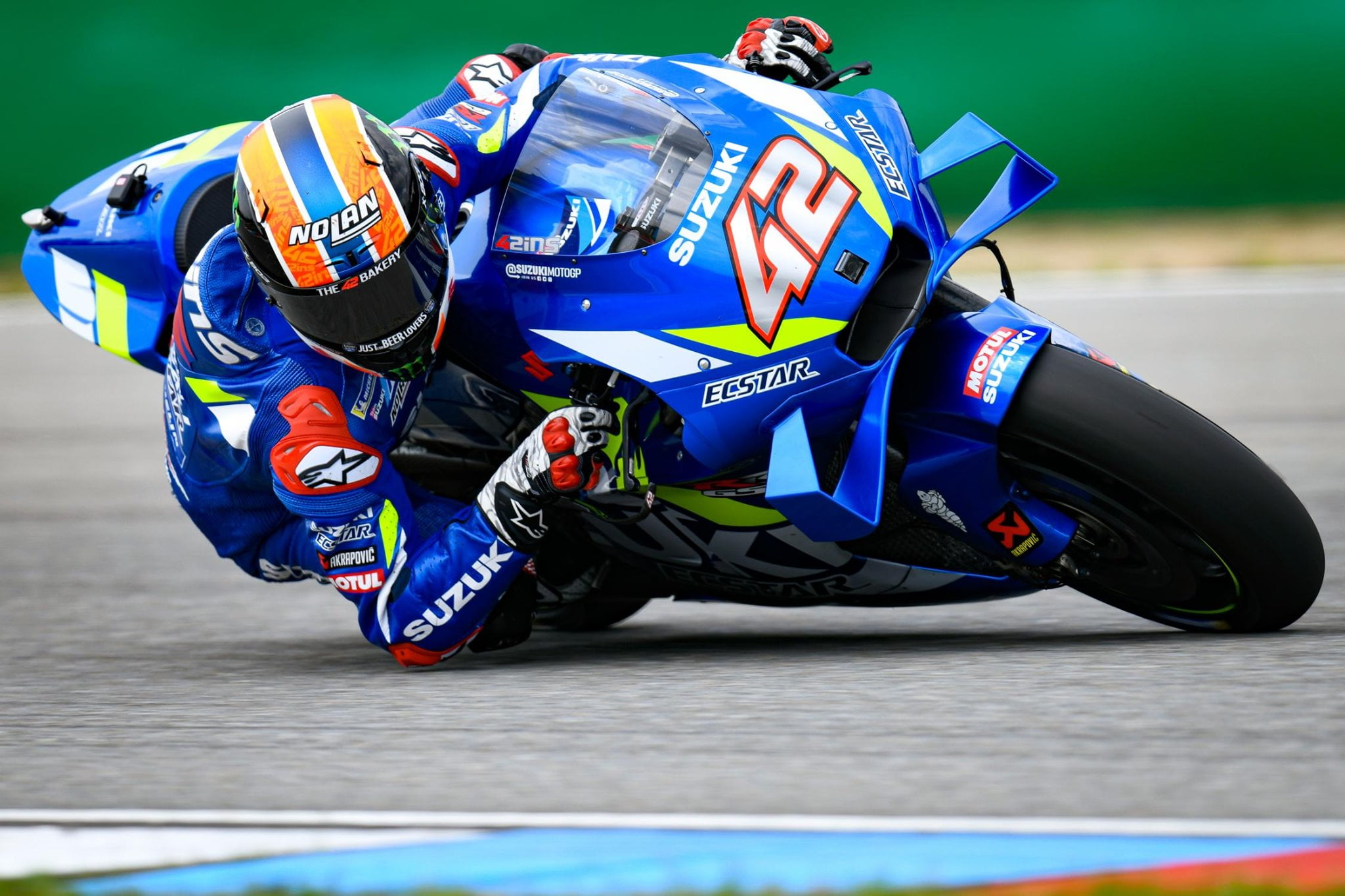
Suzuki has unveiled this aerodynamic package with a much more aggressive shape. It is reminiscent of that of the Honda (although much larger), of which they had several versions in 2019.
As said before, the air intake has also changed, with a more rectangular shape.
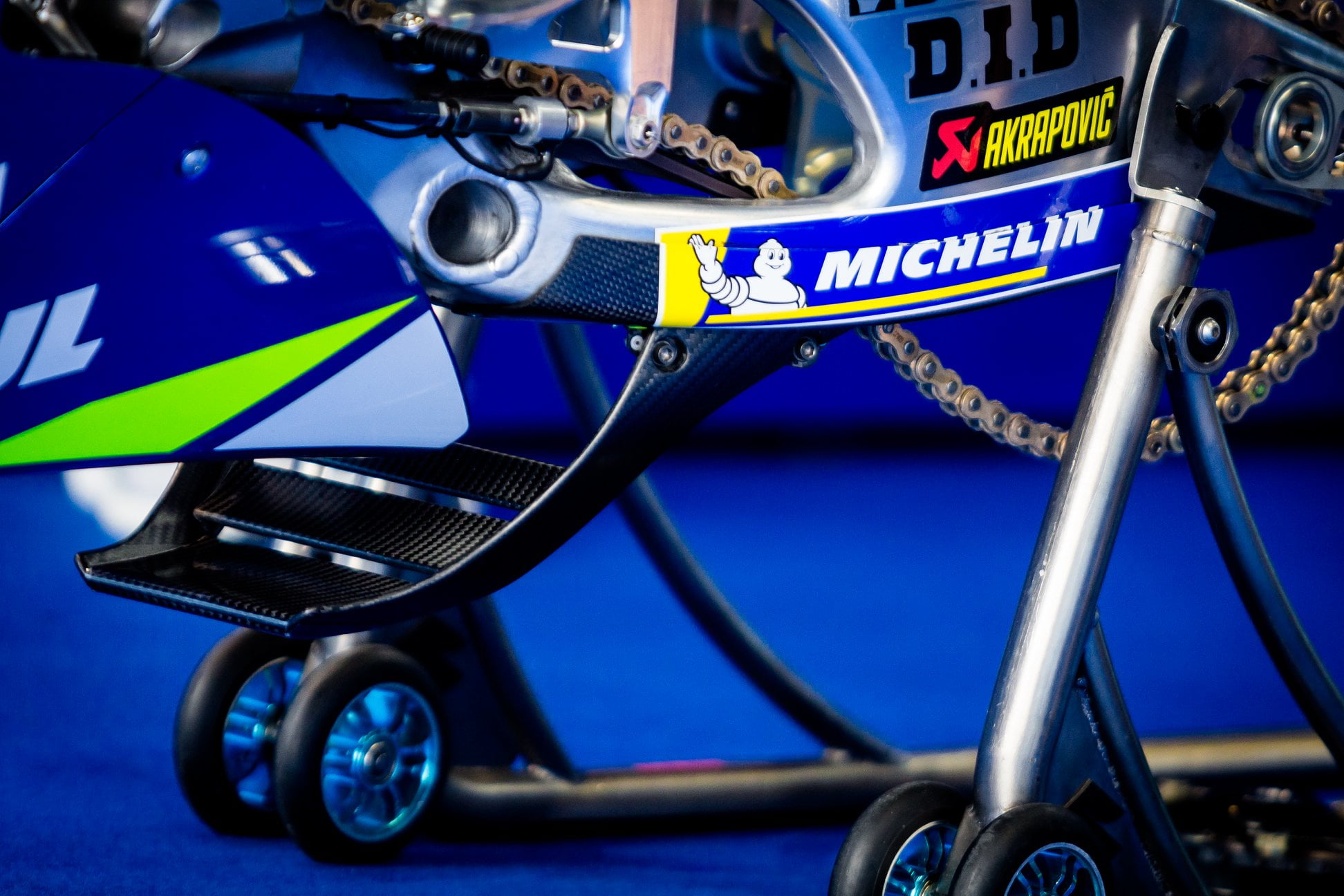
Suzuki tested 3 versions of their spoon during the 2019 season. Their initial version didn't work because it was way too big and scraped on the tarmac at high lean angles!
However, their second version, shown here, was much more effective. Smaller than the previous version, riders were happy with it and it was seen frequently on the GSX-RR.
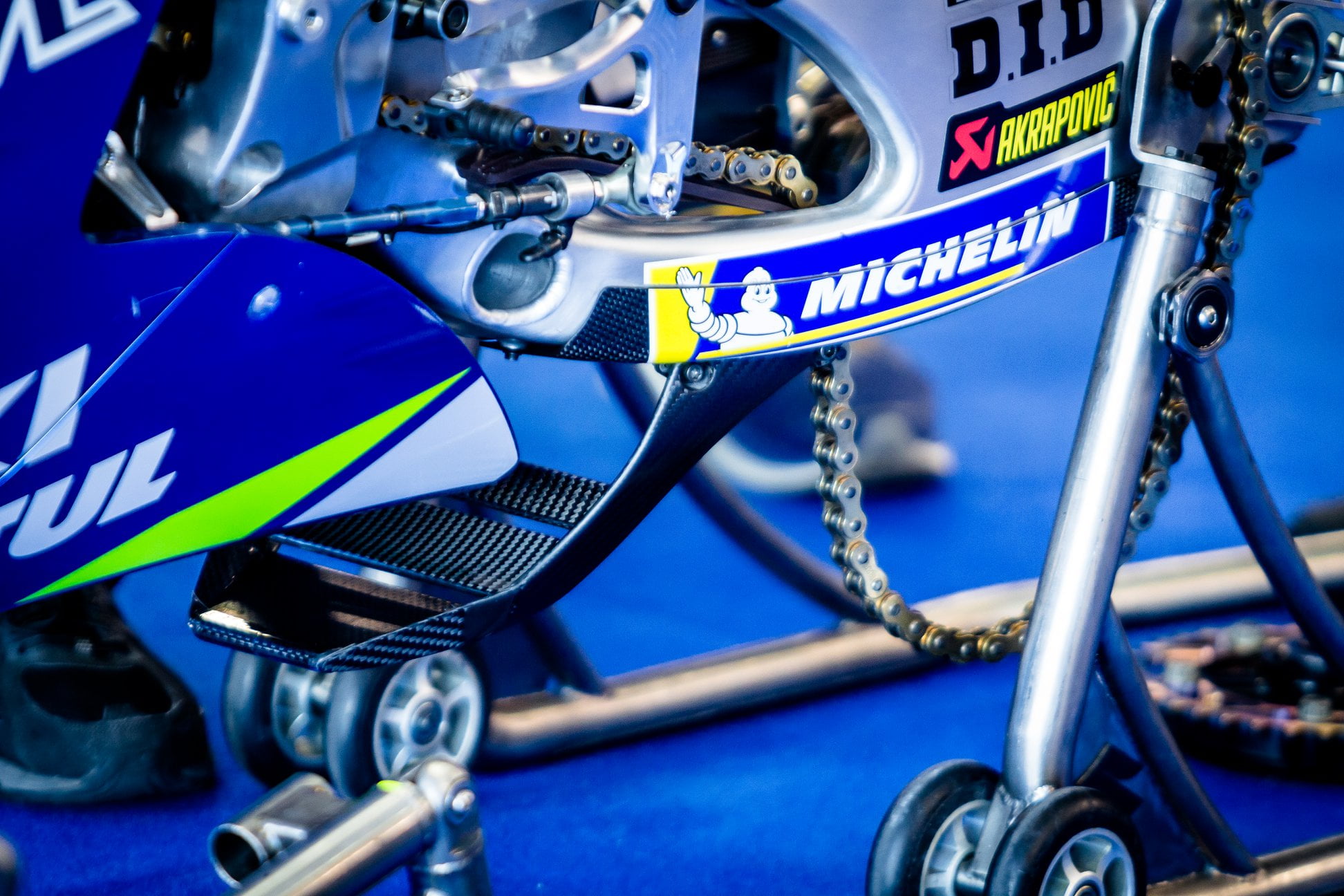
Here is the third version of the spoon. If you compare it to the version above, you will see that this third version is narrower.
It shrinks much more than before, capturing a little less air and in theory having less effect. It looks like Suzuki found something it liked, after some tweaking.
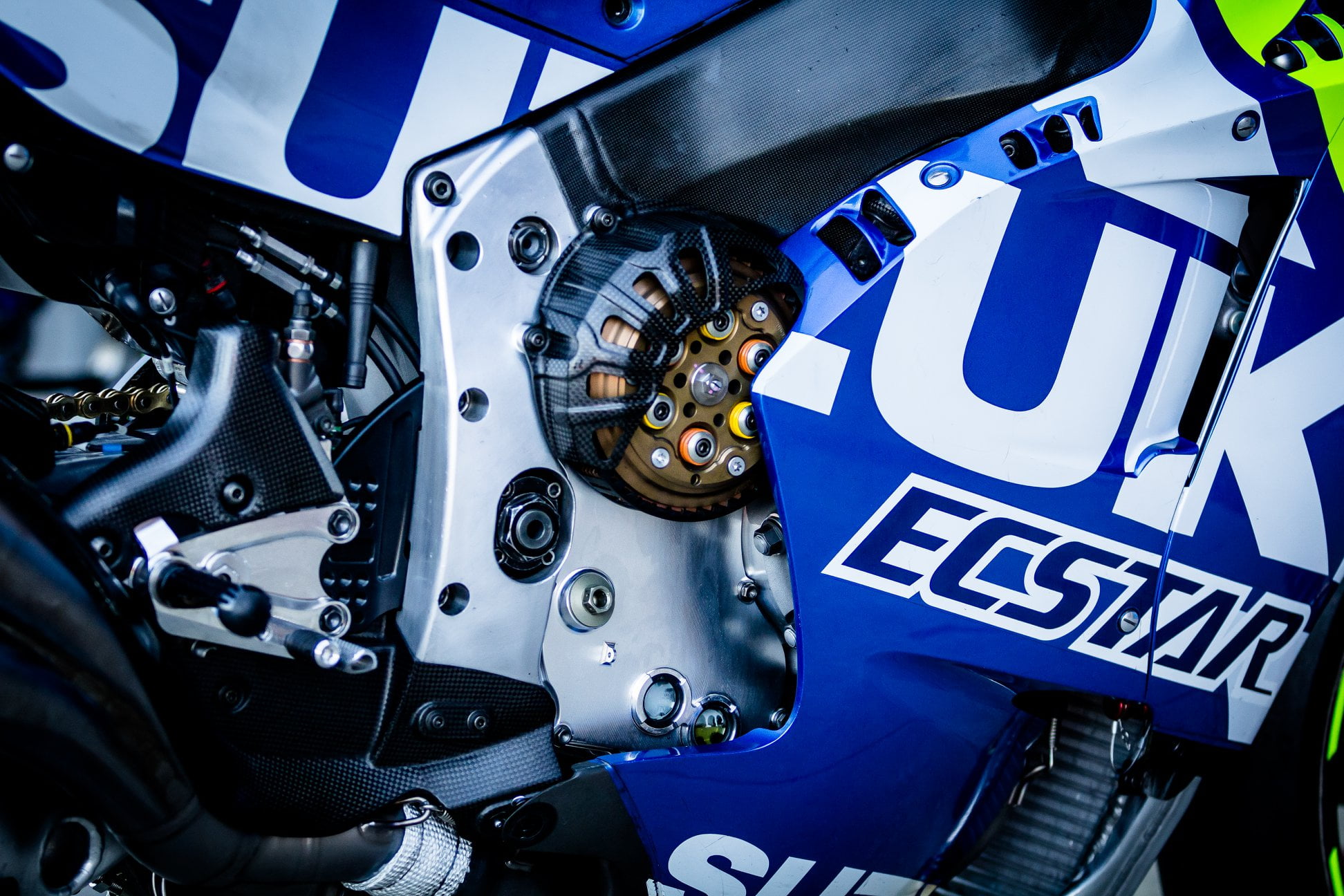
There are two notable things in this image: firstly, the carbon coating on the main beam of the frame. This was and has been a common feature on the bike for all of 2019.
Second, there are two oil level windows at the bottom of the engine. This is the easy way for us to distinguish that this is the 2020 engine. On the 2020 version there was only one.
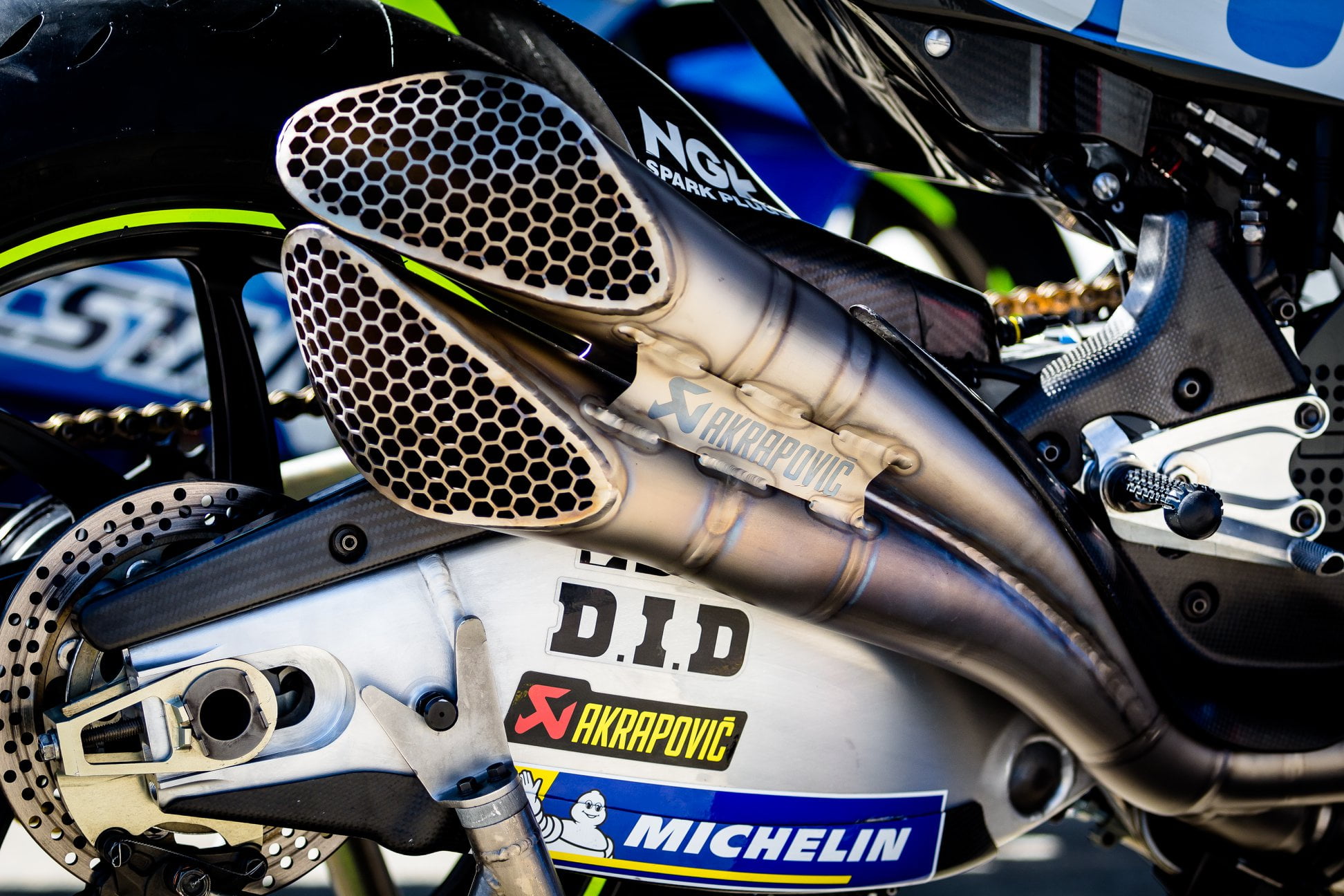
Just for your viewing pleasure, the Suzuki's dual exhaust, from which Yamaha took inspiration.
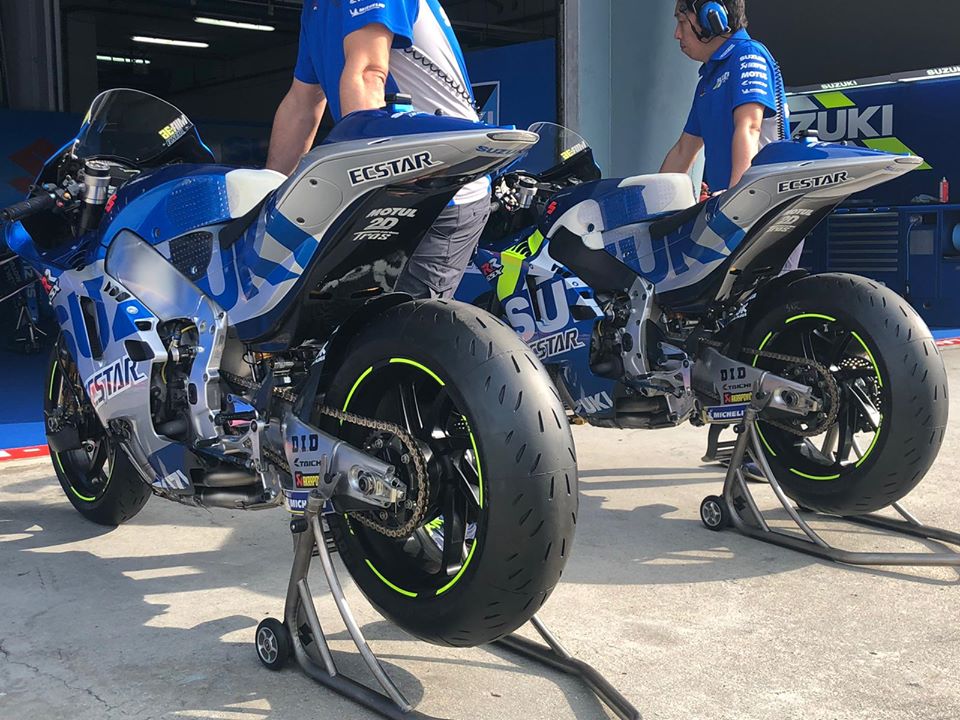
Suzuki's main weapon on the 2020 version is the new chassis which you can detail here, on the left. The one on the right bike is the 2019 version with the carbon skin, which riders have been using since the middle of the 2018 season.
Looking closely we can see that the 2020 chassis is different around the swingarm pivot point. It has a much thicker profile than before, possibly changing the rigidity characteristics of the frame.
We know that the Suzuki is probably the most consistent bike in the MotoGP field, but it has had issues in the past with braking stability. 2019 was good in terms of braking stability, but it looks like the 2020 version is even better.
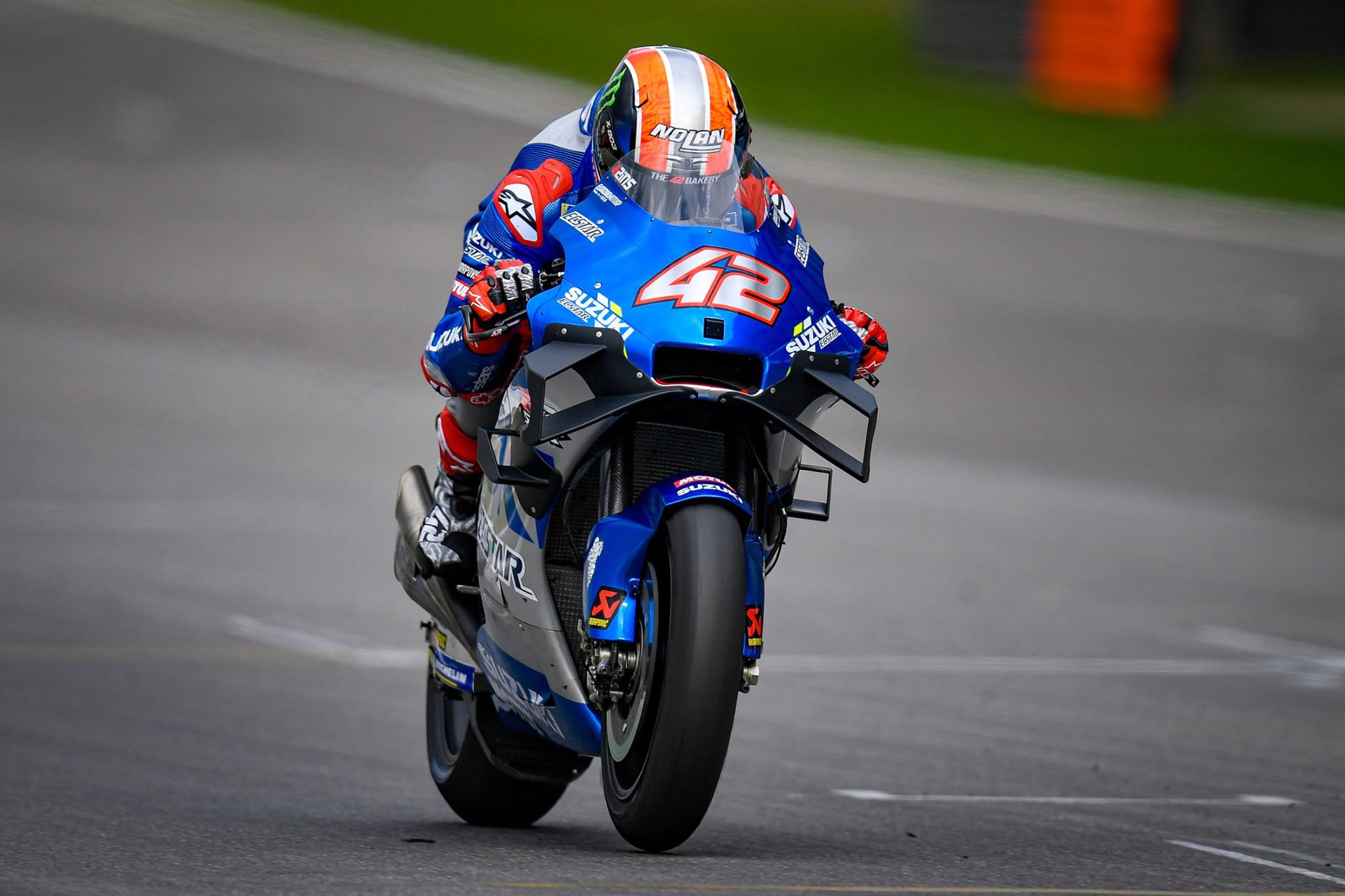
Aero was a big topic during pre-season testing and Suzuki wasn't one to ignore it. They revealed larger fins, which certainly provided more downforce to help reduce wheelies.
However, during last week's test at Misano, Sylvain Guintoli did not01 test this fairing version, but rather the 2019 one, so it may seem that the old aerodynamic package suits Suzuki better.
We will have to wait until Jerez to see what the final version of the Suzuki fairing will be.
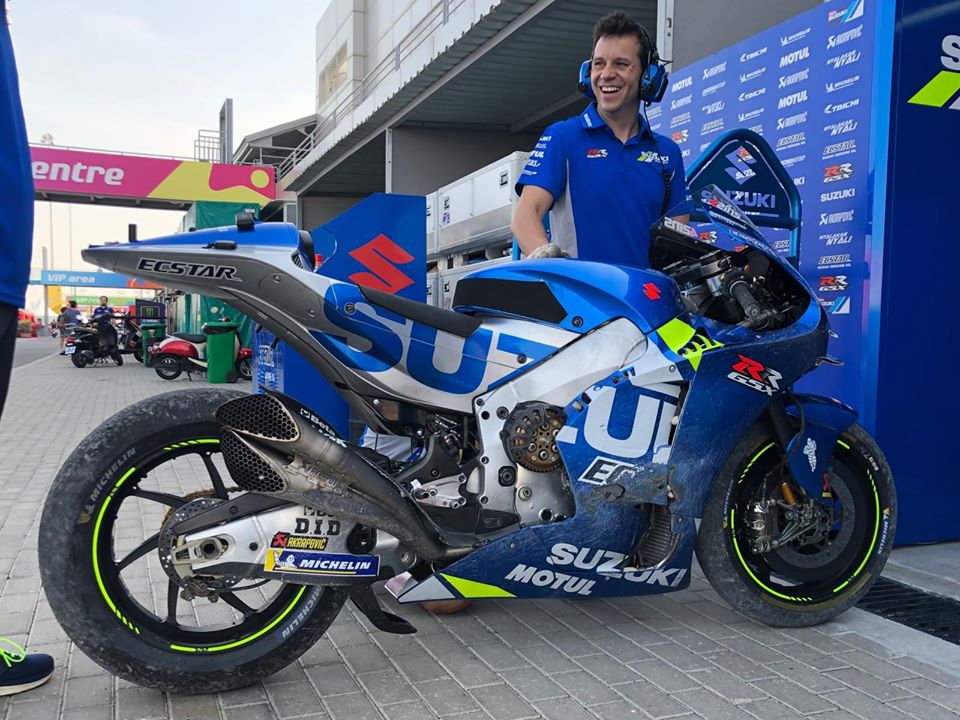
Here is the Suzuki in all its glory, even after a trip to the gravel trap. It's a great looking bike and this season it looks like it could be at the top of the timesheets too.
However, in this photo, we note that Suzuki was testing a swingarm which had a cutout on the right side (to the right of DID, above Michelin). The usual swingarm does not have this cutout and usually riders were seen with the one without the cutout. However, it remains to be seen which of the swingarms will suit riders best, depending on its stiffness.
Photos: MotoGP.com










